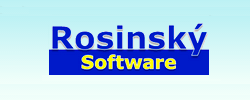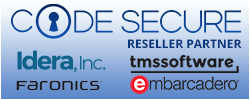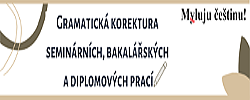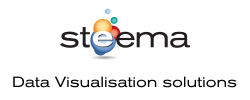sqsBasicStats 1.0
12 Dec 2005
In category
Components > Science > Statistic
Description
sqsBasicStats is a VCL-based class library, containing high performance classes to perform real-time basic statistics calculations in an easy-to-implement way. The package is about 300 kilobytes, and it is possible to integrate the necessary functionality into an executable. The compiled form of sqsBasicStats can be distributed royalty-free with your applications.Statistical Functions:
- Frequency analysis: The classes available for frequency analysis incorporate calculation of the frequency of each value in a given data set. These functions can be used to produce: - a list of unique values in the data set (called "labels"); the count of these unique values in this data set (called "count," or frequency); a calculation of percentages of these values; and a calculation of cumulative percentages. In addition, a list of cut-off points for user-defined percentiles in a given data list (including, but not limited to, quartiles) can be calculated and outlier values in the dataset can be obtained.
- Cross-tabulation: This function forms two-way tables from two sets of values representing rows and colums of the resulting table. Using this function together with Chi-square and the various t-test classes provides various methods to determine the association of the two value sets.
- Descriptive statistics: These are the basic descriptive statistics, and include: mean, median, mode, maximum, minimum, range, standard deviation, variance, standard error, sum of values, factorial, excess kurtosis, standard error of kurtosis, Pearson's first skewness, sample skewness, standard error of skewness, Pearson's correlation coefficient, covariance, standard deviation of differences, sum of co-deviates, sum of square deviates.
- One-sample T-Test: Incorporates the functions to calculate the t-test value and the significance of it, based on the contents of a sample array and an assumed population mean. The functions here are used to test whether the sample mean is significantly different than the assumed population mean.
- Pairwise One-sample T-Test: Incorporates the functions to calculate the t-test value and the significance of it, based on the contents of two sample arrays, taken out of the same sample. The functions here are used to test whether the means of the two different arrays analyzed are statistically the same.
- Independent samples T-Test: Incorporates the functions to calculate the Student's t-test value and the significance of it, using values made available from two independent samples. These functions are used to test whether the means of these two variables from two different samples is significantly different than each other.
- Chi-square analysis: Chi-square statistic is used to test the validity of the hypothesis of no association of columns and rows in tabular data that can be obtained through the use of
- CrossTab analysis. This statistic should be used with nominal data. The chi-square test is likely to find significance if the relationship is strong, the sample size is sufficiently large, or the number of values of the two associated variables is large. It is possible to determine the validity of relationships using chi-square value with different significance levels, although the level of 95% significance is the most common. sqsBasicStats computes Pearson's chi-square (as well as a few others), although other calculations of chi square value exist.
- Analysis of Variance (ANOVA): The Analysis of Variance (ANOVA) Technique tests for significant differences among two or more groups. This test tries to find out whether there is any relationship between a dependent and one or more independent variables. If there is only one independent variable, with several categories, the technique is called single classification ANOVA while the use of more than one independent variables is called multiple classification ANOVA. Since the variance (or its square root, the standard deviation) is the average distance of the raw scores in a distribution of numbers from the mean of that distribution, the functional relationship between the variance and the mean can be used to determine mean differences by analyzing variances.
- Linear regression: The linear regression analysis, in essence, helps lay out a straight line that best fits the average movement of two variables examined in the analysis, in two dimensions. The line is called the line of regression (hence the name, linear regression), and can be used for making predictions for the dependent value. The functions here compute the regression constants and the standard error.
- Missing Values: In all of the statistical analyses, it is possible to integrate user-defined missing values which can be ignored in calculations.
Informations
- Status: Evaluation (time-limit)
- Source: SW
- Price: $89.950000
- Source price: $149.950000
- Size: 572 955kB
Platforms:
- Delphi 7
Downloads



















